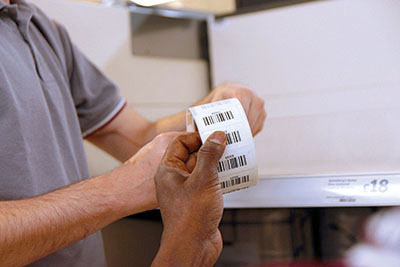Why is Asset Tagging Important to a Business?

Every business has fixed assets—whether it’s beds in a hospital, trolleys in a store, computers in an office, or chairs in a school. Managing these assets effectively is essential. Without a clear system in place, businesses risk accumulating surplus equipment, underutilised assets, or even losing track of valuable items.
What Is Asset Tagging?
Asset tagging is the process of assigning a unique tag or label, typically featuring a barcode or QR code, to each asset in a business. These tags allow companies to identify, track, and manage both fixed and movable assets across multiple sites or warehouses. Asset tagging is a fundamental component of any asset management strategy, enabling real-time tracking, maintenance logging, and asset verification through regular audits.
When used effectively, asset tags can capture critical data, such as location, usage history, and condition, giving businesses a comprehensive view of their asset data and enhancing overall operational control.
The Importance of Asset Tags for Your Business
From computer monitors to industrial tools, the ability to identify, track, and verify business assets is essential. Without asset tagging, companies face the risk of:
-
Equipment being underutilised or forgotten
-
Assets being moved without documentation
-
Theft or loss going unnoticed
-
Maintenance and replacement planning becoming reactive instead of proactive
A properly implemented asset tag system supports maintenance control and ensures assets are monitored throughout their lifecycle, from purchase and usage to repair and eventual disposal.
Benefits of Asset Tagging
1. Improved Visibility and Control
With asset tags in place, businesses gain full visibility over their inventory. This includes real-time location data, stock levels, and usage history, allowing for faster decision-making and better allocation of resources.
2. Enhanced Asset Register Accuracy
An up-to-date asset register provides detailed information for each item, including:
-
Serial number
-
Barcode of the tag
-
Item name and manufacturer details
-
Date of purchase
-
Current location and condition
-
Value at purchase and current value
-
Estimated lifespan and performance history
Having this data readily available improves reporting, budgeting, audit readiness and ensures a simple process for asset verification.
3. Reduced Operational Costs
Asset tagging helps prevent unnecessary purchases by avoiding duplication and improving utilisation. It also reduces losses through better traceability, limiting the risk of misplaced or stolen equipment.
4. Time Savings Across Teams
Instead of calling around to locate missing equipment, staff can quickly identify where items are located. This saves valuable time, especially across larger organisations with multiple departments or locations.
5. Lifecycle and Maintenance Management
By tracking asset condition and service history, businesses can improve scheduled maintenance and replacements, increasing equipment longevity and performance.
Implementation of an Asset Register
No matter the size or type of business, implementing an asset register is a smart move. It’s a straightforward yet powerful way to gain control over fixed and mobile assets, reduce losses, and ensure efficient use of equipment. By tagging and tracking assets, businesses can build a robust asset register, reduce costs, save time, and improve strategic planning.
An accurate list of assets and their condition empowers businesses to make smarter, data-driven decisions, delivering both time and cost savings while maximising asset value.